Twins fly high, but plummet to All-Star break
By John Gilbert
The first half of the 2011 Major League Baseball season has been intriguing, to say the least. For the Minnesota Twins, the unanimous bandwagon residents who started the season jumped off to become doomsayers by All-Star time. Both extremes are probably mistaken.
It all came so easy for the Twins at the start of the season — the new ballpark, the big contract for hometown hero Joe Mauer, and a runaway start to the season that seemed to leave all the contenders behind. But it’s a long season in Major League baseball, and it was even a long way to the midpoint.
The Twins dropped from the clouds and reached the All-Star break much the way a man lost in the desert crawls across the last sand dune to find an oasis with water and shade. Ah, safe at last. But mostly, in equal doses, the oasis is a chance to regenerate for the Twins, and the opportunity to slow down the rampaging Chicago White Sox.
If you look at the standings at the break, Chicago was 49-38, leading Detroit (48-38) by a half-game, and the Twins (46-42) by three and a half in the division. That doesn’t sound too bad, but you have to look at what has happened in the last month before the break.
Better yet, let’s go back to the start of the season. Everyone was predicting a runaway for the Twins, because of Mauer, Morneau, and the addition of Jim Thome and a couple of infielders, plus those strong and young arms on the pitching staff. Me? I have watched Major League ball my whole life, and I’ve seen these artificial hype jobs. My preseason assessment was:
I think the Twins will score runs by the tons, but I don’t know if their pitching staff can keep any opponent from scoring more runs than they deserve. The new ballpark is going to be an enormous attraction, but fans who show up had better be prepared for some mighty shootouts, because the Twins pitching is as suspect as their offense is imposing. Without question, the Twins have the best talent in the division, but when things get tight, generally good pitching shuts down good hitting. The Twins will be tough to shut down, but on many dates, they may find it impossible to shut down even mediocre foes.
Those looking down from the bandwagon thought I was being negative. Especially when the Twins started out with a roar. Those strong, young arms were impressive. Scott Baker and Kevin Slowey, seemed destined to battle over which would be the staff ace, but after breezing through four or five innings, they’d get hammered. Nick Blackburn, however, looked like an ace, virtually unbeatable all through May. The biggest surprise to me was that Francisco Liriano had made a remarkable comeback after sitting out a whole season with surgery on his prized left arm, followed by season-long struggles in his attempts to return last season.
Liriano used to throw a great fastball and a stunning screwball, which backed up on left-handed hitters and broke away from right-handed hitters. However, the excessive torque a screwball places on a pitching elbow undoubtedly was the cause of Liriano’s ailments. He came back last year but couldn’t throw with the same velocity, or location. This year, Liriano is a different pitcher. He has gotten the velocity back up into the 90s on his fastball, and he has abandoned the screwball for a great slider, which he throws at different speeds to include a change-of-pace from his fastball.
With Liriano and Blackburn carrying the main load, the Twins ran up a 22-12 starting record as of May 13. That was good for a lead over Detroit (20-15) by two and a half games, while Chicago was 14-20, tied with the Cleveland Indians eight games off the pace.
A month later, on June 13, not much had changed, and everything had changed. The Twins were still in command, although some holes were showing. Justin Morneau’s sizzling bat carried the offense, even while the redoubtable Joe Mauer was struggling to stay in the mid-.300s — a departure for him, while other Major League players would be thrilled to be hitting anywhere over the .300 mark.
What had changed was the pitching. Blackburn, invincible in May, seemed able to only hit the fat parts of opposing bats in June, and his record reversed itself. Liriano was either great or awful, in somewhat equal amounts. It was Carl Pavano who rose up, throwing shutouts and complete games. Morneau kept hitting, Mauer hit less, but the Twins had a 36-27 record one month ago, on June 13, which was good enough to lead Detroit (33-29) by two and a half, and Chicago (28-34) by seven and a half.
On July 1, the Twins were 43-36, which led Detroit (41-36) by one slim game, while nobody seemed to notice that Chicago never lost anymore. Quietly, at least in Minnesota, the White Sox improved to 40-37, and trailed the Twins by only two games. The Twins kept faltering; nobody but Pavano looked good among the starting five, and the middle relief corps was getting bombarded.
Morneau caught a knee to the head sliding into second and was sidelined with a concussion that knocked him out of the All-Star game. Mauer, who spent the first two months hitting in bad luck — meaning he went out quite a bit, but usually only by smacking line drives that led to great catches. Detroit slipped past, but then the White Sox roared past both of them. As we paused for All-Star break, July 13, the White Sox had risen to 49-38 to take over the division lead, a half game ahead of Detroit (48-38), and three and a half ahead of the sputtering Twins (46-42).
While the Twins reached their oasis to regroup, the White Sox hammered Kansas City 15-5 to go into the break on an eight-game winning streak, and a more-amazing surge of a 25-5 run. They went from being an under-achieving also-ran to a run-away missile. They were a third-place team sitting nine games under .500 and 9 1/2 games out of first place in the American League Central on June 8, but rode that rocket to become a first-place team by the break.
Suddenly, the bandwagon jumpers are spewing news of hopelessness, but that’s not accurate, either. A Minneapolis columnist and radio guy said that because Delmon Young was having his best year ever, the Twins should trade him (!) for another starting pitcher. Hold on, here. A great starting pitcher can win once every five or six games, while a solid .300-plus hitter in the middle of the lineup can help win EVERY game.
The Twins staff at All-Star break shows Carl Pavano 10-6, with a 3.58 earned-run average, and three complete games; Baker 7-8, and 4.87; Liriano has slipped to 6-7, and 3.86; Blackburn has found sea-level at 7-7, with a bloated 6.40 earned run average, making it difficult to remember that he has the only other complete game on the staff. Slowey has shown signs of maturing, and is 8-5, with a lowering 4.64 ERA.
The White Sox pitchers are hardly burning up the league, either, but they also are big and strong. Gavin Floyd, for instance, is 5-6 for record, but he’s also an imposing 6-foot-6 and 235 pounds. Get this: All 12 Sox pitchers are 6-foot-2 or taller, and only one — John Danks — weighs under 220. Danks is 210. Sox closer Bobby Jenks is 6-4 and 275. Must eat a lot of Chicago steaks and Gino’s East deep-dish pizzas for pre-game, post-game, or both.
However, as we assess the Twins, their hitting also is worthy of scrutiny. Morneau went out leading the team in home runs and hitting a splendid .345, while Delmon Young rose to second on the team at .305. Mauer has slipped to .293. Denard Span, who was so hot early, is now at .273. Michael Cuddyer (.267) and Jason Kubel (.264) should be hitting better, and Jim Thome will rise from .255 as he gets more at-bats.
Looking only at hits, Morneau’s halfway stats show 102, Span 97, Cuddyer 86, Mauer — tied with Young — at 85, while Hudson has 81, and Kubel 73. Anothber vital category is runs batted in, where Young leads the team at 58, followed by Morneau 56, Kubel 49, Cuddyer 40, Span 37, Mauer 35, and Thome 29, even though he has only 145 at-bats, to 290 for Mauer. The other big key is runs scored, where leadoff man Span leads with 54, clean-up man Morneau 53, Cuddyer 50, Hudson 49, Mauer 47, and Young 38.
When the Twins hit, they seem to get taken down by faulty pitching; when their pitching is strong, they don’t hit well; when their starting pitchers do well, the middle relief collapses. But keep a few things in mind:Â There is still a lot of time to get it together. The season is only half through. The White Sox can’t keep playing at a 25-5 clip. Mauer will get his act together and start hitting over .300 again. The young pitchers with their live arms will become more consistent.
And the first series coming out of the All-Star break? The White Sox face the Twins. It should be fun, but just don’t let the gloom-sayers get to you. If it seems that all the Twin Cities columnists are writing as though they are talk-radio responders — they are, come to think of it.
WORLD CUP WINNERS
Spain won its first World Cup of soccer, after a rugged and style-free struggle to a 1-0 extra- time triumph over the Netherlands. It was a long, tough tournament in South Africa, but there was some great soccer sprinkled in among the yellow and red cards that seemed to dominate at the finish.
Every time I was impressed with a team, such as Brazil, or Argentina, or Ghana, or Germany, it seemed as though that team would then lose its next game. That was great, however, because it showed how competitive the world is when it comes to playing soccer.
Congratulations to Spain, and we can only hope that the all-time largest viewing crowd included enough U.S. observers to boost soccer to its rightful place in this country in time for a concerted effort four years from now, when it starts all over again.
XCEL CENTER LANDS NCAA PUCK
The Minnesota Wild’s Xcel Energy Center, which will be host to the 2011 NCAA Men’s Hockey Frozen Four next April 7-9, will also be the site of the 2012 West Regional in St. Paul. The NCAA sure does like those huge crowds the X can attract for college hockey.
It is the fourth straight year that the Twin Cities will play host to the NCAA hockey’s premier event and the third consecutive visit to Xcel Energy Center for the popular tournament. Xcel Energy Center also hosted the 2002 Frozen Four, which saw the Gophers defeat Maine in the title game, and held the West Regional for 2010.
The arena seats 18,064 for hockey, and has also been the site of the past 10 WCHA Final Five tournaments.
The 2012 West Regional will be played on March 23-24, or March 24-25, with each of the four participating teams having an open practice on the day before their opening round games. The regional winner earns a trip to the Frozen Four, which will be held at St. Pete Times Forum in Tampa, Fla., in 2012.
Cruze helps Chevy gain small-car focus
By John Gilbert
WASHINGTON, D.C. — The new Chevrolet Cruze made its official media introduction in and around Washington, D.C., and rural Virginia — a setting filled with history and imagery that rivaled the vehicle itself as an attraction. We drove up to the Manassas battlefield, where the bloodiest of Civil War battles occured, and past Bull Run and other historic sites in the Virginia countryside. Until you visit those places, the U.S. capitol emerging in Washington, D.C., while the Confederate capitol was in Richmond, Va., was among obscure memories from high school history class. Visiting them, and their proximity, adds perspective to it all.
That scene plays out as the historical impact of Chevrolet seeking to enliven the second have of its hope to be known as the “once and future” vanguard of the U.S. auto industry, because the Cruze is the vehicle that could prove Chevrolet can, indeed, build an outstanding compact car.
Chevrolet small-car marketing director Margared Brooks told the assembled auto-writers: “We have to bring out cars the people want.”
My personal imagery gong sounded immediately, loud and clear, because during those decades when General Motors made ever-larger and ever-more profitable cars and SUVs, journalists might ask about the social or environment responsibility of building excessively large vehicles with excessively low fuel economy. Every time, a GM executive would shrug and say: “We’re only making the vehicles that the people want.”
We will write off the familiar rhetoric as unfortunate coincidence, because this time it seems that Chevy folks might mean it, and they might finally have caught on to what dozens of warning signs had tried to indicate over the last two decades.
With the Cruze, Chevrolet has something that fulfills U.S. drivers’ wants and needs, and also could represent a large turnabout for responsibility. In the past, GM, and particularly Chevrolet, had such a hold on the industry that U.S. car-buyers would “want” anything Chevy was going to build. But over the last three years, GM has undergone the turmoil of nearly sinking when high fuel costs signalled the abrupt end of large-truck and car sales, which was followed swiftly by bankruptcy, the well-publicized government bailout loans, and only now the apparent righting of the sinking corporate ship.
The Cruze is capable of leaving those cynical memories behind. It is a compact car aimed at challenging the Honda Civic, Toyota Corolla, Volkswagen Golf, Ford Focus, and Hyundai Elantra in a highly competitive downsized market where Chevrolet has been just a token performer. There was the Cavalier, of course, and more recently the Cobalt. Remember, in fact, a few months ago, when football analyst Howie Long exchanged his integrity for a pile of Chevy advertising money, and he’d come on television to announce that the 2010 Cobalt was “better than” the Honda Civic? Howie didn’t tell us that the Cobalt was so good, GM was about to eliminate it for 2011.
The Cruze not only replaces the Cobalt with a slightly larger and more technically advanced car, but from its appearance, ride, handling, and performance standpoints, the Cruze seems to be on-target to be the best small car Chevrolet has ever offered to the public.
A few years ago, when the Saturn Aura was introduced, I suggested it might be the best sedan in the entire GM stable. There was a reason for that. The Aura was a revised version of the four-year-old Opel Vectra from GM’s arm in Germany. A year later, the Malibu was another version of the Vectra/Aura. Then GM blessed Saturn with the Astra, which was a rebadged version of the Opel Astra, and I wrote that car was the best small car GM had ever offered. As GM chose to eliminate Saturn and Pontiac from the scene, Opel had redesigned the Vectra into a new car called the Insignia. With Saturn gone, GM gave the new version of the Insignia to Buick as the 2011 Buick Regal.
Opel, meanwhile, totally revised the Astra two years ago, and it won 2010 European Car of the Year awards. That car and the Cruze share the same platform, with the Astra being a hatchback and the Cruze getting what Chevrolet calls “more expressive” styling. For power it has either a 1.8-liter 4-cylinder in the base LS, or a 1.4-liter turbocharged engine, standard in the LT1, LT2, LTZ, and Eco models. With either a 6-speed manual or a 6-speed automatic, the 1.4 turbo produces 138 horsepower and 148 foot-pounds of torque.
Driving the Cruze is impressive, with its flat and stable attitude in turns, and power that might best be described as adequate. Chevrolet says the Cruze accelerates 0-60 in 10.0 seconds, while the Civic does it in 8.6 and the Corolla in 9.4. It feels composed and coordinated, though, and I prefered the more basic interior styling, with a 2LT model having a coarse woven fabric on the dashboard and for accents.
“The trend is moving away from larger to smaller vehicles,” Our Ms. Brooks said. “Two or three years ago, selling small vehicles was an uphill climb, but in 2008, the spiked fuel prices triggered the move to smaller vehicles. But customers still want upscale smaller cars. If a vehicle is high-styled and more fuel-efficient, customers are much more likely to consider it.”
The design of the Cruze is smooth and contemporary. “It has an exterior to fall in love with, and an interior to live with,” said Michael Simcoe, executive director of Chevrolet design. Among the interior refinements are a contemporary instrument layout, with piano-black and silver trim, a Pioneer 9-speaker audio system, all the Bluetooth and USB connectivity you might want, and even a navigation screen. A nav screen is not to be trifled with. When the Malibu came out and won Car of the Year honors, you could not get a nav screen in the car, but only OnStar’s “turn-by-turn” nav lady telling you where to go. So to speak. There are also safety amenities, such as standard StabiliTrak, traction control and antilock brakes, and inside, there are 10 standard airbags, including front seat side, head-curtain, knee and outboard rear side bags.
Interior volume of the 4-door sedan Cruze shows 94.6 cubic feet of volume, compared to 92.0 for the Corolla and 90.9 for the Civic, and cargo capacity of 15.4 in the Cruze, better than the 12.3 cubic feet in the Corolla, or 12.0 in the Civic. The suspension is excellent, with MacPherson strut front and a Z-link rear with a torsion beam, set up for side-to-side wheel control, making the Cruze handle well enough to potentially handle the competition. The basic Cruze comes with 16-inch wheels and a Touring suspension, with disc front and drum rear brakes. The Sport suspension option adds 17-inch wheels and 4-wheel discs, while the top LTZ has Sport suspension standard and 18-inch wheels. The Sport suspension in the LTZ has higher spring rates than the outgoing Cobalt SS, which is reflected by the car’s superior stability and firmness.
The power, however, is another matter. And the never-ending compromise blending power and fuel economy is the larger part of that question. The 1.8 non-turbo has 138 horsepower and 123 foot-pounds of torque, while the 1.4 turbo has the same 138 horses at 4,900 RPMs, and much stronger 148 foot-pounds of torque which rise to a peak at 1,850 RPMs and holds that peak to 5,000 revs. That engine is part of the recharging system for the upcoming plug-in electric Volt. Its high-tech features include solid cast crankshaft, integrated turbocharger, cast-iron engine block, but requiring no balance shafts, and chain-driven dual-overhead camshafts.
Offering a lot of upscale features, such as impressive sound-deadening inside, are reflected in the Cruze sticker prices. The base LS starts at $16,995, the 1 LT $18,895, the Eco at the same $18,895, the 2 LT at $21,395, and the top LTZ at $23,695.
Chevrolet’s intention to make the Cruze a high-level compact will find considerable competition, because virtually every competitive company is doing the same with compacts. Chevrolet officials are enthused because the lighter, slimmed-down Eco model is aimed at attaining 40 miles per gallon. Ford, on the other hand, hasn’t introduced the new Focus global car yet, and Ford has its smaller Fiesta out and attracting major interest. The Fiesta is smaller than the Cruze, but with surprising interior room, plenty of pep, and over-40 miles per gallon, it also has a lower price tag.
Forget the competition, though. The Cruze sets new standards for Chevrolet, and General Motors. And that’s a tall order for a compact car.
Nissan Juke could…go…all…the…way
VANCOUVER, British Columbia — Imagine a wild party being conducted at Nissan’s design studio, where people from every cubicle choose up sides and play “spin the concept” — in which every participant tosses an ingredient from crossover SUVs, sports cars, compact and subcompact designs and features into a blender. Puree the whole thing, then shake well, and pour out a unique vehicle. Allow it to harden, then squash it down to a size small enough to start a new segment.
Call it “sport-crossover-hatchback-runabout.” Nissan calls it the “Juke.”
Football season is a great time to introduce a car with that name. Fans might appreciate the analogy most, because while some prefer watching a skilled passing attack from someone like Brett Favre, others might prefer the running game, the way Adrian Peterson rushes. When the Minnesota Vikings move the ball, Favre simply hands off to Peterson, who runs through the line with force, feinting an instant one way, then darting the other, all in a split second. That ability, which is nearly impossible for opponents to defend, is called a “juke” in football jargon.
Capitalize the NFL’s slang term for such a deceptive move, capitallize it, and the Juke emerges as Nissan’s newest vehicle. — capable of dashing through congested traffic with power, quickness and precision.
The Juke is deceptive in every way, defying traditional segments as easily as it slip through openings in congested traffic. It is not a car, really, nor is it a truck, and it’s not a sports car or crossover, either. Larry Dominique, who oversees Nissan project engineering, calls it “a sport-cross design that combines urban versatility with agile handling and adaptability.”
When it comes to unorthodox, Nissan is preparing to introduce its plug-in electric Leaf, and maybe the Juke is the perfect set-up for the Leaf. The Juke’s styling can generously be termed surprising, and the same goes for its power, which comes with a small 1.6-liter 4-cylinder, with direct injection and turbocharging to make its chain-driven, dual-overhead-camshafts run its dual variable-valve-timed 16 valves through their paces. Those paces run up to 188 horsepower at 5,600 RPMs, and 177 foot-pounds of torque, which hold that peak from 2,000-5,200 RPMs. Either a 6-speed stick shift of Nissan’s Xtronic CVT (continuously variable transmission) is available, as is either front- or all-wheel drive.
Estimated fuel economy is 27 city and 32 highway for the vehicle, which is built on a widened version of the subcompact Versa’s B-platform.Interior room is surprisingly spacious, with 10 cubic feet of storage behind the second row seat, or 35.9 cubic feet if you fold the rear seat down. The Juke measures 162.4 inches long, with a 99.6-inch wheelbase, and a width of 69.5, standing 61.8 inches tall.
Occupants sit up a bit higher than in most small cars, and Nissan is aiming the Juke at the Mazda3, Mini Cooper, Suzuki SX4, and Toyota Matrix and Scion tC. They might also have included the Honda Fit and the new Ford Fiesta hatchback. To take on such worthy competition, the Juke needs a low sticker price and a lot of performance agility, and Nissan made sure the Juke is well-endowed for either. Backing up its power, Juke base prices range from $19,710 to $25,300.
Without question, the Juke is startling when first seen. My first impression of the Juke front end’s wide-set headlights was a cartoon bullfrog. The lower fascia sweeps upward at both ends, and those headlights are plugged into the upper part of the fascia, right about where you might expect foglights to be. A thinner strip of lights runs vertically up and over the top edge of the fenders, and are visible from the interior. There is nothing weird about cartoons, or bullfrogs, by the way, and as many might find the Juke cute as unorthodox, but it is definitely far enough out of the mainstream to create its own channel.
Nissan has produced beautiful vehicles such as the 370 Z sports car, Altima and Maxima sedans, as well as the Infiniti G Coupe and Sedan, and the new M37 and M56 Infinitis. All are strikingly beautiful in design. Nissan also startled us all with the Murano crossover SUV, and the Infiniti FX models, which have been successful, even though their rounded-edge, rolling style falls more into the unusual region — something that must grow on customers. Same with the Rogue, Murano’s hot-selling and inexpensive compact crossover cousin.
Now comes the Juke, a new member to that ever-narrowing line between smaller crossovers and expanding subcompacts, literally crossing over to link both.The just-introduced Juke was voted to the candidate list for 2011 North American Car of the Year, but it might have been just as comfortable as a “mini-truck” of the year, if there was such a category.
Dominique will settle for the small crossover designation. “Small crossovers are expected to grow by 200 percent between 2005 and 2014,” he said, noting we are halfway from zero toward that 200 percent right now.
Typical with Nissan, the true beauty of the Juke comes from inside behind the steering wheel. A high shift lever, located on a circular mound of hard plastic, and other hard plastic surfaces on the dashboard, might lack the currently trendy soft-touch feel, but instruments are reminiscent of a motorcycle to the driver. Nissan says it is aiming the Juke at young males, which is not a surprise. In reality, young women — perhaps more secure in their identities — will readily buy macho-targeted vehicles, while young men might have nothing to do with a vehicle discerned as aimed at women.
Every gender will appreciate the Juke’s performance. Its turbo power zips around and through congested traffic, and it also is fun to drive on the highways. We got to try both. The Juke was introduced to the North American media at the Shangri La Hotel in Vancouver, and we were soon driving off through the city, then across the Lions Gate Bridge and up to catch the Horseshoe Bay Ferry to Langdale. From there, we drove north through some breathtaking scenery to our lunch destination at the West Coast Wilderness Lodge, before heading back toward Langdale and the ferry.
Nissan has been the most dedicated manufacturer to refine CVT automatics, which constantly shift via a belt while feeling as though they are never shifting, and that dedication is good reason the company is the most accomplished at the constantly-shifting system. Paddles allow the driver to squeeze the belt down to varying torque levels on the CVT, almost as effectively as a normal gearbox downshift. Power is distributed to either the front wheels or to all four, in all models.
Running through the base prices, before adding the $750 destination fee, the S model with front-wheel drive and VCVT is $18,960, and the AWD model is $20,460; moving up to the SV adds a moonroof and other features, costing $20,260 for the manual FWD, $20,760 for the FWD with CVT, and $22,600 for the AWD with the CVT; and the SL, which adds leather seats and navigation, starts at $22,550 for the FWD stick, $23,050 for the FWD with CVT, and $24,550 for the AWD with CVT.
At those prices, all Jukes come well equipped. The base model S has 4-wheel disc brakes, keyless entry, cruise control, 17-inch alloy wheels, 60-40 fold-flat rear seat, and speed-sensitive door locks and power-assisted steering, , and offers, and most of the features on the upgraded models, such as heated leather seats, navigation system with 5-inch screen, and iPod and Bluetooth connectivity, are available as options. And there is no “base” engine — all models come with the high-tech, turbo engine.


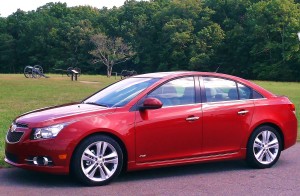
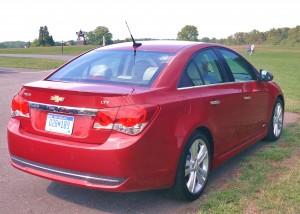

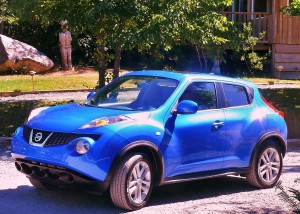
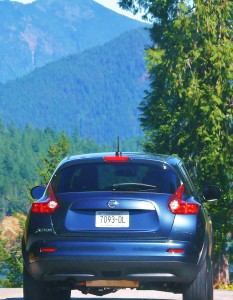
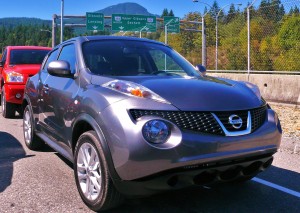
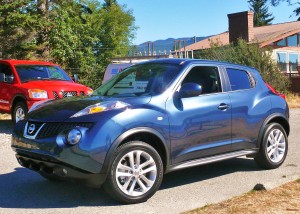
 John Gilbert is a lifetime Minnesotan and career journalist, specializing in cars and sports during and since spending 30 years at the Minneapolis Tribune, now the Star Tribune. More recently, he has continued translating the high-tech world of autos and sharing his passionate insights as a freelance writer/photographer/broadcaster. A member of the prestigious North American Car and Truck of the Year jury since 1993. John can be heard Monday-Friday from 9-11am on 610 KDAL(www.kdal610.com) on the "John Gilbert Show," and writes a column in the Duluth Reader.
John Gilbert is a lifetime Minnesotan and career journalist, specializing in cars and sports during and since spending 30 years at the Minneapolis Tribune, now the Star Tribune. More recently, he has continued translating the high-tech world of autos and sharing his passionate insights as a freelance writer/photographer/broadcaster. A member of the prestigious North American Car and Truck of the Year jury since 1993. John can be heard Monday-Friday from 9-11am on 610 KDAL(www.kdal610.com) on the "John Gilbert Show," and writes a column in the Duluth Reader.